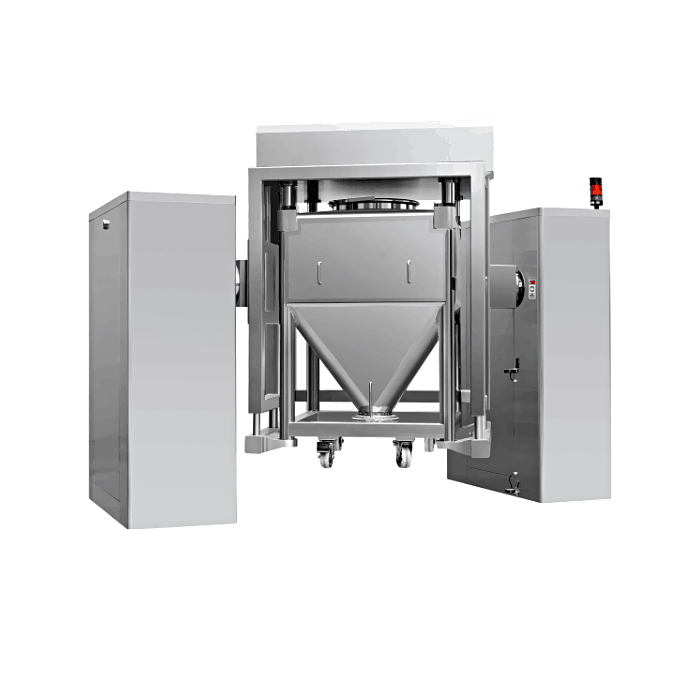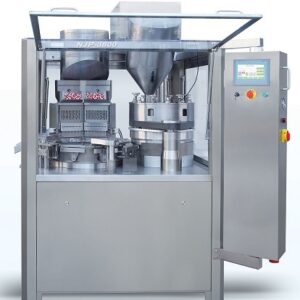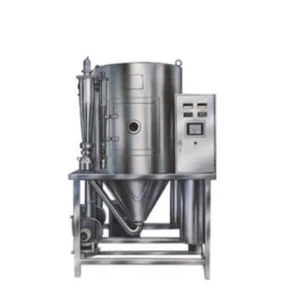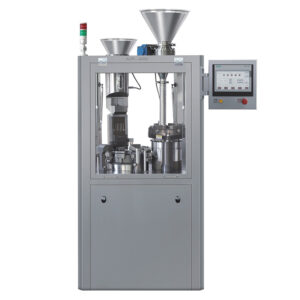Description
| Specification | Details |
|---|---|
| Model | BB-2000 |
| Capacity | 2000 liters |
| Material | Stainless steel 316L |
| Blender Speed | Adjustable from 10 to 50 RPM |
| Power Supply | 3-phase, 380V/50Hz |
| Motor Power | 7.5 kW |
| Control System | PLC with touchscreen interface |
| Safety Features | Overload protection, emergency stop button |
| Dimensions (LxWxH) | 2500mm x 1500mm x 2000mm |
| Weight | 1200 kg |
| Certification | CE and ISO 9001:2015 compliant |
| Additional Features | Vacuum loading, dust extraction system |
Understanding the Bin Blender
In the core, a bin blender is a specialized unit designed to homogenize powders in pharmaceutical manufacturing. Also known as powder blenders or drum blenders, these are instruments that help mix all the components as much as possible into uniform blends with exact ratios.
A typical bin blender comprises a rotating container mounted on a central axis. For instance, pharmaceutical powders are loaded and mixed within this container using various blending techniques such as tumbling, and rotation among others. The bin blender’s design ensures thorough blending while minimizing ingredient segregation or degradation risk.
Functionality and Operation
Bin blenders work according to the principles of gentle yet thorough mixing to achieve consistency in powder blends. This commences through dumping raw materials into the blending chamber either manually or via automated systems like vacuum transfer or pneumatic conveying.
The ingredients are now loaded hence activating the bin blender’s mixing mechanism. Depending on the specific design of the blender this can be done by rotating the blend drum, tumbling internal baffles or agitation by mixing paddles etc. Throughout the process of blending powders are continuously agitated and re-distributed ensuring an equal mixture of all constituents.
The duration and intensity of the blending process can be customized based on specific formulation requirements. Advanced bin blenders also come with programmable controls and monitoring systems that allow operators to precisely adjust blending parameters and track process variables in real time.
Benefits of Bin Blenders
Bin blenders provide numerous advantages that make them indispensable tools in the pharmaceutical industry:
Uniform Blending: By evenly distributing ingredients in every batch manufactured it helps minimize any hot spots or differences between dose units especially for finished products.
Time & Labor Savings: Thus automated blending reduces human intervention therefore freeing other tasks personnel from their activities thus streamlining workflows for production units
Consistent Quality: Regarding product quality and purity standards control over those greatest parameters is exercised by using bin blenders during drug development.
Flexibility: These are versatile machines able to handle many different powder formulations which makes them useful for several pharmaceutical applications.
Regulatory Compliance: Designed to meet stringent regulatory conditions, most bin blenders comply with the standards and guidelines established by the industry.
Applications of Bin Blenders
Bin blenders are extremely multipurpose in many pharmaceutical manufacturing processes:
Solid Dosage Forms: Tables, capsules and other solid dosage forms usually require precise blending of APIs, excipients and lubricants. Bin blenders are commonly employed in this process.
Granulation: The uniform distribution of granulating agents as well binders via the wet granulation method is made possible through the use of bin blenders that ensure the uniformity of granule properties suitable for tabletting or encapsulation purposes.
Powder Coating: For instance, in powder coating operations where there is a need to render substrate particles with particular surface characteristics for example uniform dispersion of coating materials.
Blend Uniformity Testing: Therefore bin blenders are used in the testing stage to determine if powder blends are uniform enough to move on to downstream processes such as compression or encapsulation.
Best Practices for Bin Blender Operation
To achieve maximum efficiency and efficacy when using a bin blender, it is important to observe best practices.
Cleaning and Maintenance: Preventing cross-contamination, equipment malfunctions and prolonging the life of bin blenders are all achieved through following proper cleaning and maintenance protocols.
Validation and Documentation: Regulatory compliance as well as quality assurance requires comprehensive documentation about operating procedures and batch records in addition to thorough validation of blending processes.
Operator Training: To minimize errors, ensure safe operation of machines by staff as well as promote efficient production practices, training is offered on proper equipment operation and safety protocols.
Monitoring and Quality Control: Quick correction of deviations becomes possible when robust monitoring systems together with quality control measures are adopted in blending processes for timely realization which facilitates this process itself.
FAQs
1. What is a bin blender?
A bin blender is a special pharmaceutical manufacturing tool that homogenizes powders gently through tumbling, rotation or agitation within a blending chamber. This ensures that ingredients in powder blends are uniformly distributed.
2. How does a bin blender work?
Bin blenders typically have a central axis that revolves around a rotating drum or container. Powdered medicines are poured into the blender while it’s active hence ensuring a thorough mixture of powders altogether; whereas rotating or agitating redistributes the powders thus leading to uniformity in blending.
3. What are the advantages of using a bin blender?
Uniformity of blend, time-saving, labour saving, consistent high-quality standards, flexibility in different formulations as well as regulation adherence among others give benefits for utilizing bin blenders. They also help reduce mistakes made by human beings and maintain effective workflow patterns during production processes.
4. What types of pharmaceutical processes use bin blenders?
Bin blenders are commonly used in solid dosage forms (tablets capsules granules) manufacturing processes. They also have applications in powder coating industries and blend uniformity testing to ensure product quality/integrity.
5. How do I choose the right bin blender for my manufacturing needs?
Determining the right kind of bin blender involves looking at factors such as batch size, blending requirements, and desired features like programmable controls and monitoring systems. It might be necessary to consult with equipment suppliers and carry out trials to find the most suitable one.
6. What are the key considerations for operating a bin blender?
Other critical areas include calibrating equipment, cleaning schedules, process validation regarding blending, training of operators together with implementation of measures in terms of monitoring and quality control. Complying with these standards ensures good performance within the regulatory limits.
7. How do I maintain and clean a bin blender?
For proper cleaning and maintenance of a bin blender, it is important to disassemble the machine, get rid of residual powders plus all contact surfaces cleaned using appropriate solutions or detergents. Besides that, regular inspections on moving parts need to be done while any damaged part should be replaced properly.
8. Can bin blenders handle hazardous or potent compounds?
Yes, indeed there are many bin blender models that were specifically designed for handling hazardous or High Potency Active Pharmaceutical Ingredients (HPAPIs). Such models have unique attributes including isolators or glove boxes which minimize exposure risks on an operator’s part while maintaining product integrity.
9. What are the regulatory considerations for using bin blenders in pharmaceutical manufacturing?
Regulatory bodies like the Food and Drug Administration (FDA) and the European Medicines Agency (EMA) have guidelines governing the validation of equipment documentation as well as cleaning procedures meant for processes involving blending bins in drug production sectors of the industry. Non-compliance with these rules may make products unfit for use by people or animals.
10. How can I troubleshoot common issues with a bin blender?
Some of the common problems regarding bin blending can be inconsistent mixing, equipment malfunctions or deviation from blending conditions. The process involves determining the source of the problem like poor loading, machinery troubles and irregularities on the platform for manufacturing then suggesting ways to fix it including rechecking settings, carrying out an inspection of necessary tools or even recalibrating a blender if need be.





Reviews
There are no reviews yet.